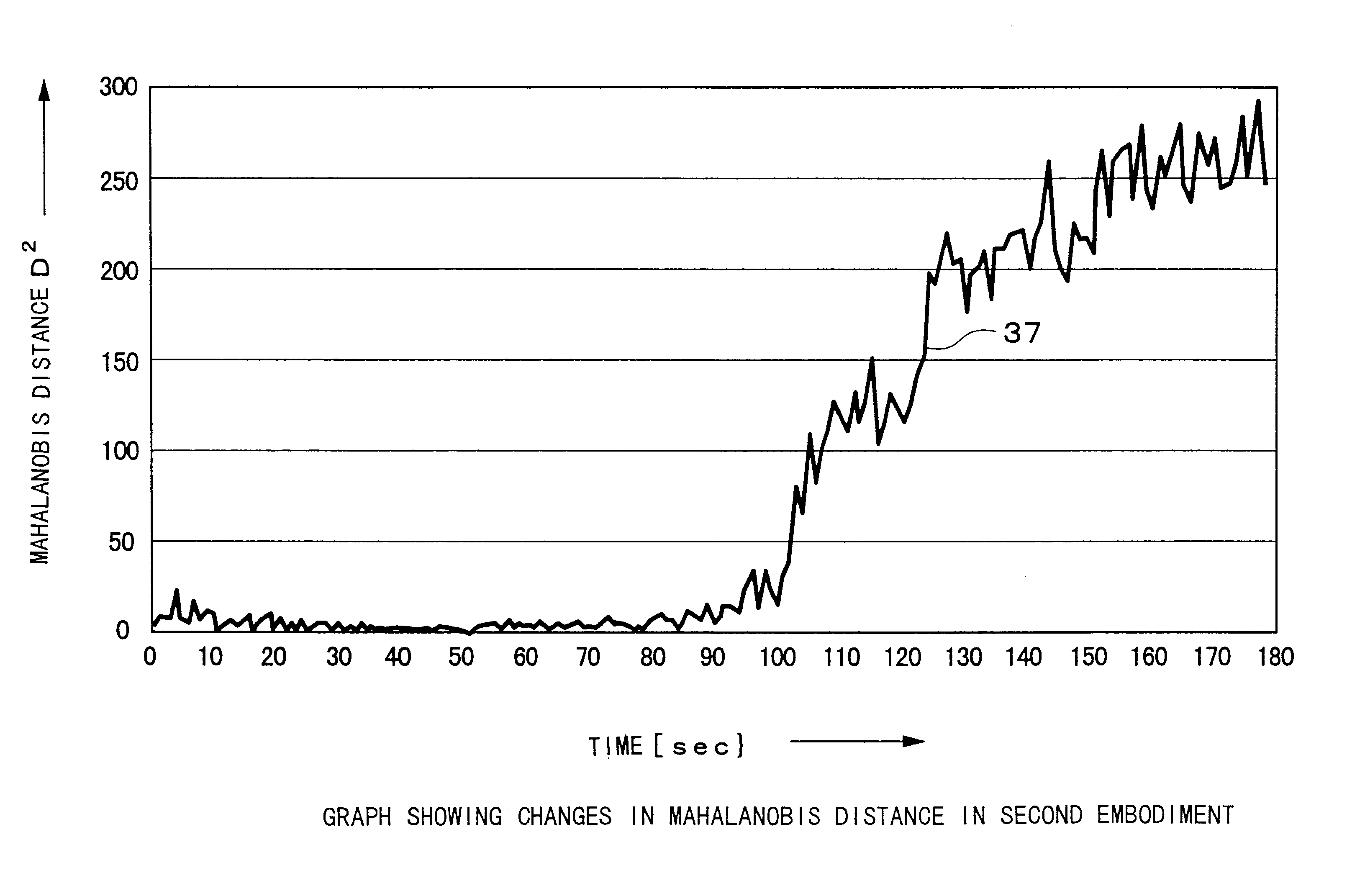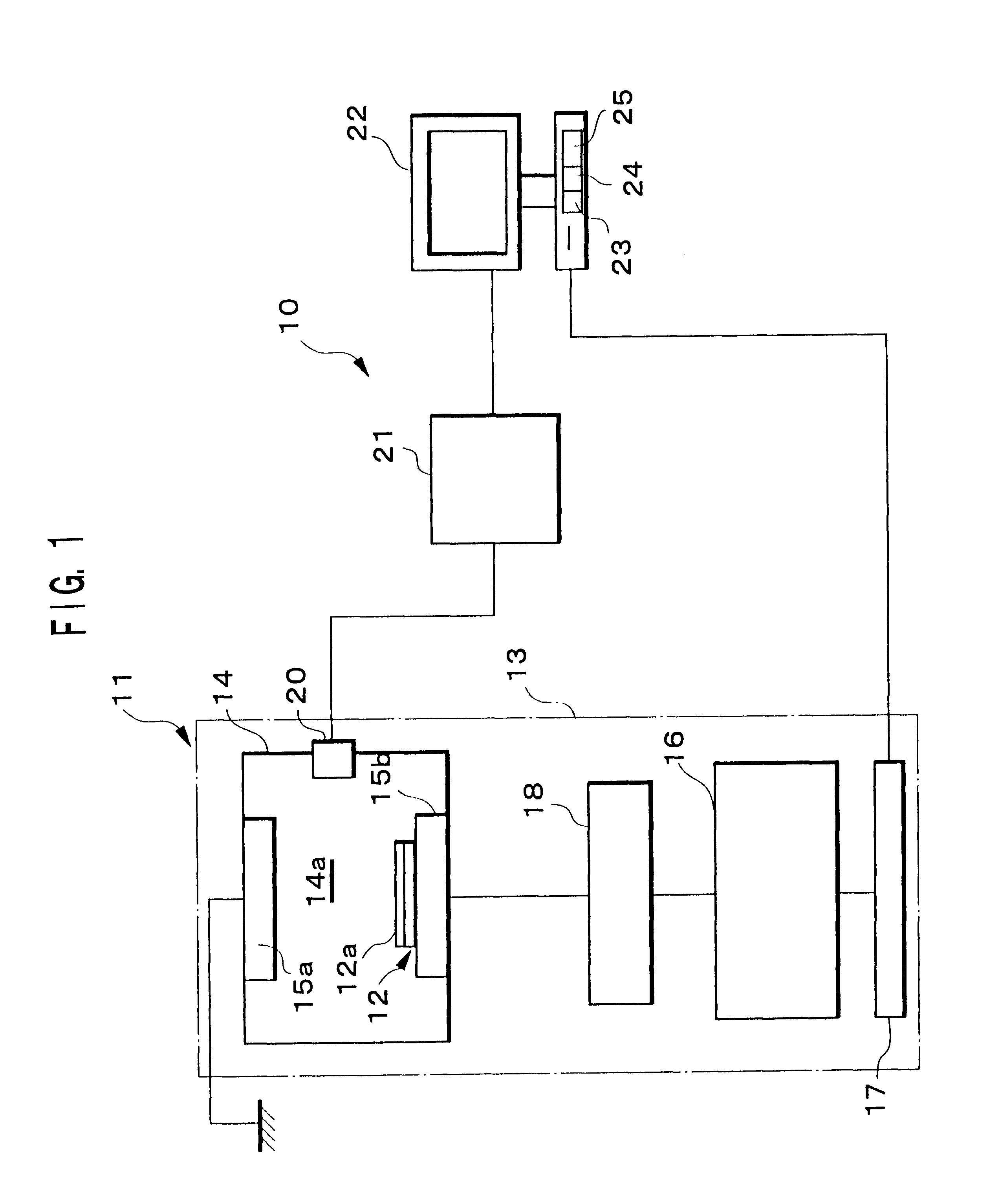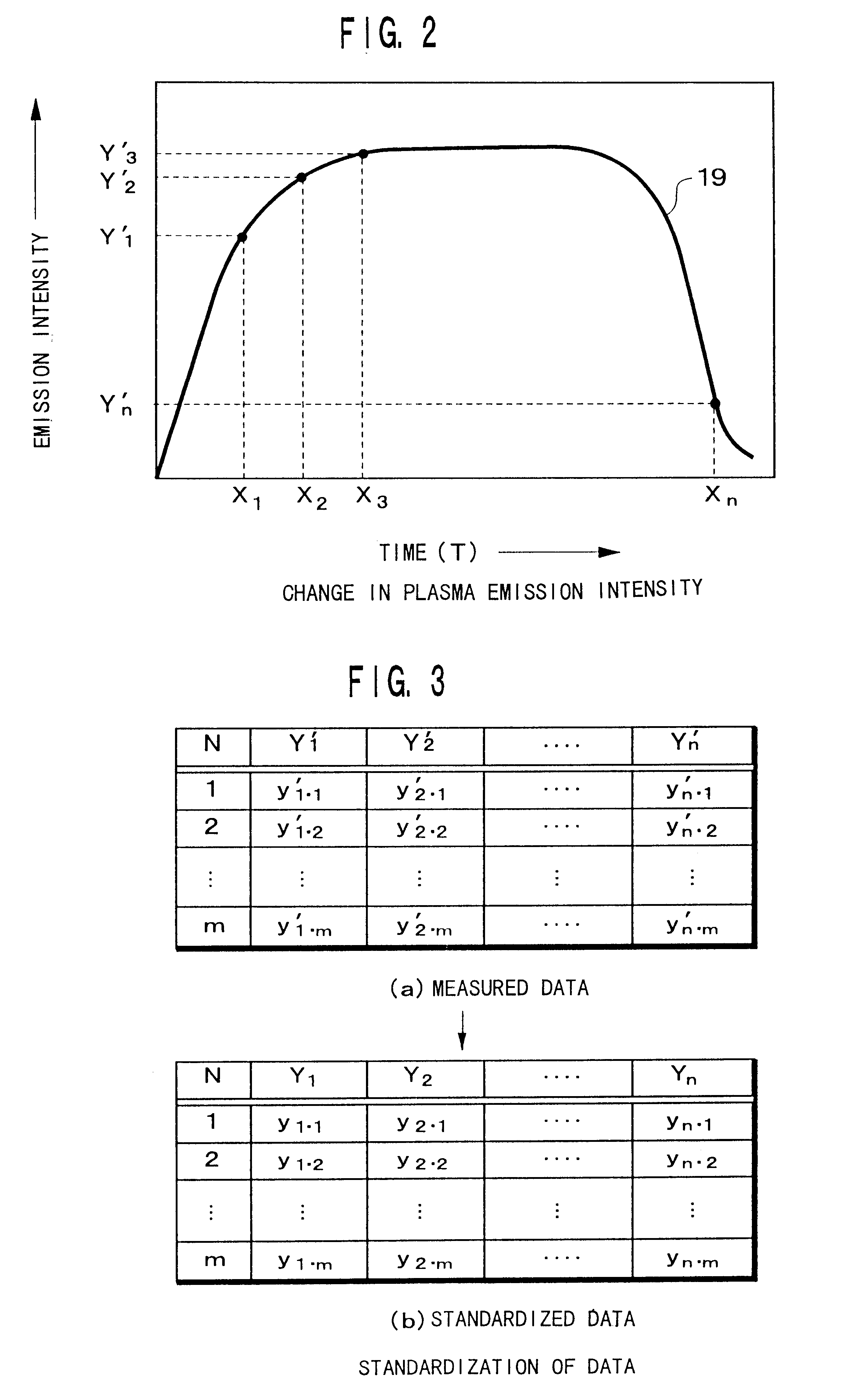Method and system for managing semiconductor manufacturing equipment
a semiconductor manufacturing and equipment management technology, applied in the direction of ignition automatic control, electric controllers, instruments, etc., can solve the problems of inability to capture time-series changes between data values, inability to detect equipment malfunctions accurately, and inability to use plasma emission intensity as a parameter to detect equipment malfunctions
- Summary
- Abstract
- Description
- Claims
- Application Information
AI Technical Summary
Benefits of technology
Problems solved by technology
Method used
Image
Examples
second embodiment
FIGS. 7 to 11 are graphs showing examples of changes in measured data (I.sub.0, I.sub.2, I.sub.3, I.sub.4, V.sub.1, V.sub.2, V.sub.3, V.sub.4 and the phase .THETA.) and changes in the Mahalanobis distance D.sub.2 in the second embodiment shown in FIG. 5.
This is a case where abnormality occurred in the operation of the plasma etching system 11 about 90 to 100 sec after the start of the etching process.
The horizontal axis of a graph in FIG. 7 represents time (sec) from the start to the end of etching, and the vertical axis represents voltage values [V]. The characteristic curves 26 and 27 respectively show changes in the voltage value V.sub.0 of the fundamental wave component and the voltage value V.sub.1 of the first harmonic component of high frequency output from the high frequency generator 16.
In the two characteristic curves 26 and 27, minute voltage changes are observed which are considered to be noise, but in the graph of FIG. 7, there are no notable indications of change other...
third embodiment
Therefore, the management system in the third embodiment is capable of detecting an infinitesimal change in plasma in the reaction chamber 14a of the plasma etching system 11, which cannot be detected only from a change in emission intensity. Therefore, it becomes possible to manage the operation of the plasma etching system 11 with high accuracy.
The foregoing description has been made using an optical parameter related to plasma emission or electrical parameters, such as voltage, current and phase of high frequency electric power in order to manage the operation of the plasma etching system.
The present invention of this patent application is not limited to them, it is possible to adopt various system parameters representing the operating condition of the plasma etching system, such as gas pressure, APC, or the like of the reaction chamber of the plasma etching system by using a detector, such as a mass spectrograph.
Besides the above-mentioned management of the plasma etching system...
PUM
 Login to View More
Login to View More Abstract
Description
Claims
Application Information
 Login to View More
Login to View More - R&D
- Intellectual Property
- Life Sciences
- Materials
- Tech Scout
- Unparalleled Data Quality
- Higher Quality Content
- 60% Fewer Hallucinations
Browse by: Latest US Patents, China's latest patents, Technical Efficacy Thesaurus, Application Domain, Technology Topic, Popular Technical Reports.
© 2025 PatSnap. All rights reserved.Legal|Privacy policy|Modern Slavery Act Transparency Statement|Sitemap|About US| Contact US: help@patsnap.com



